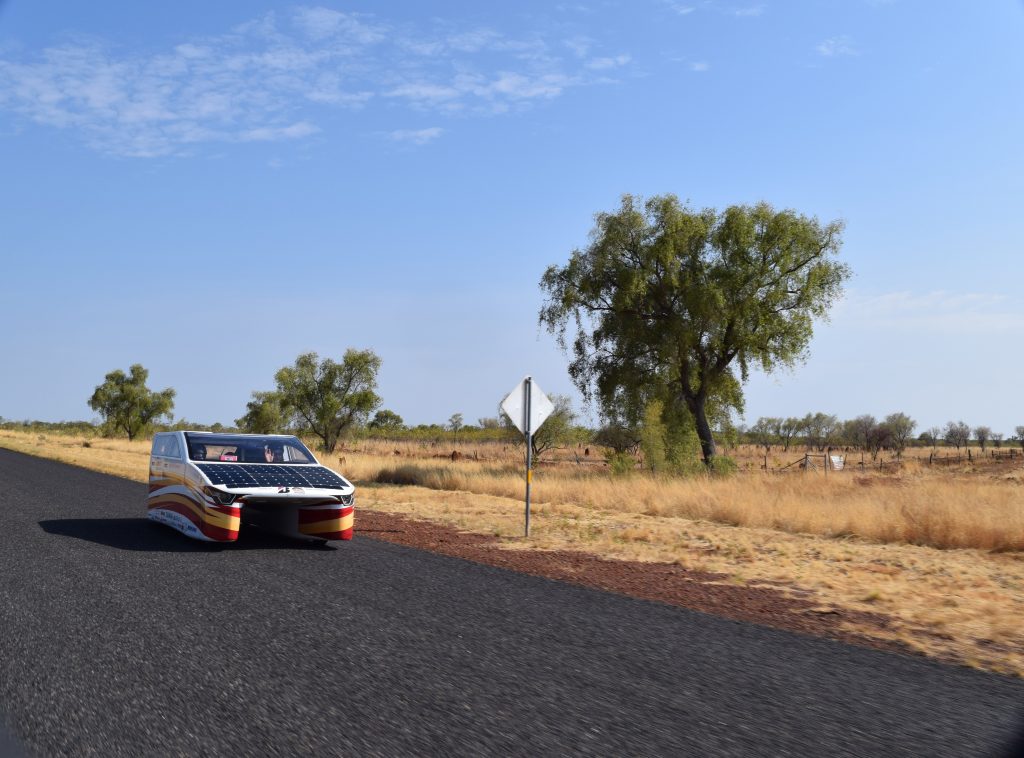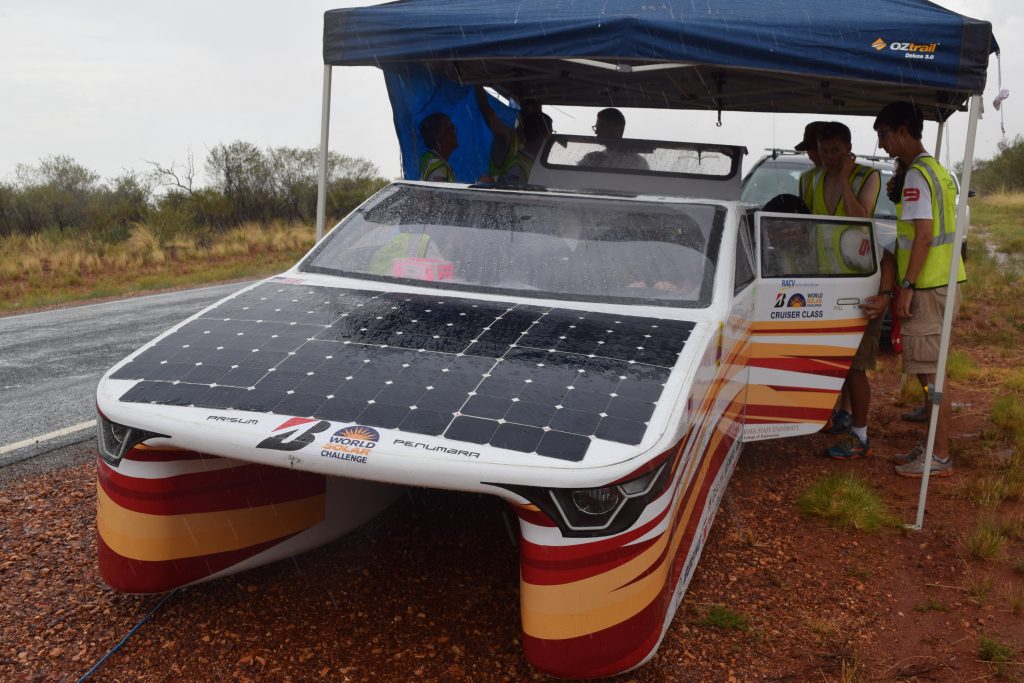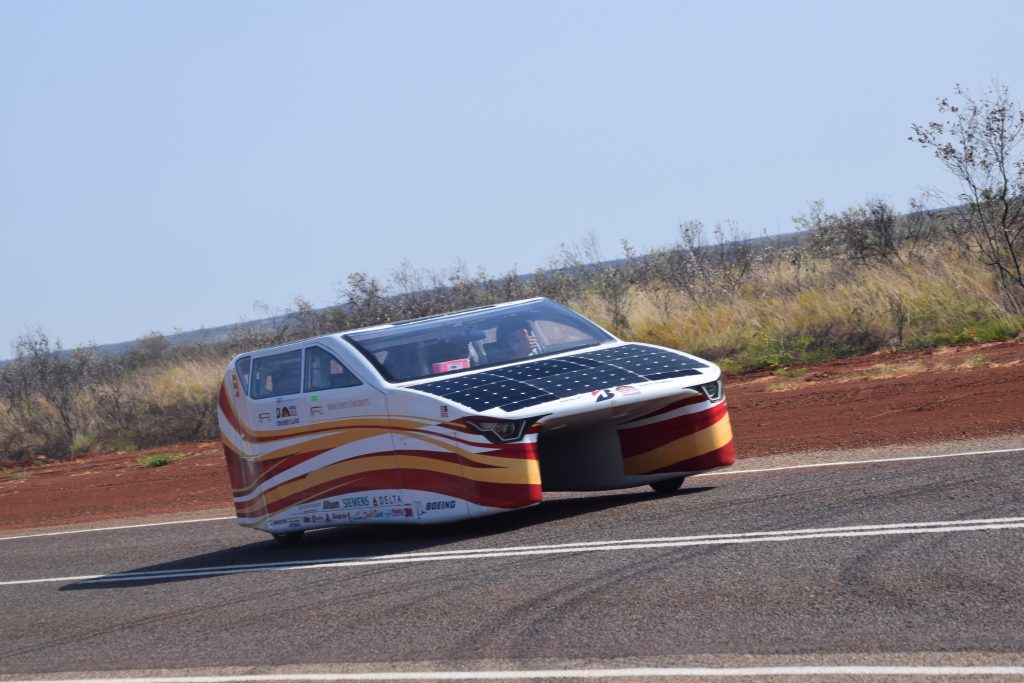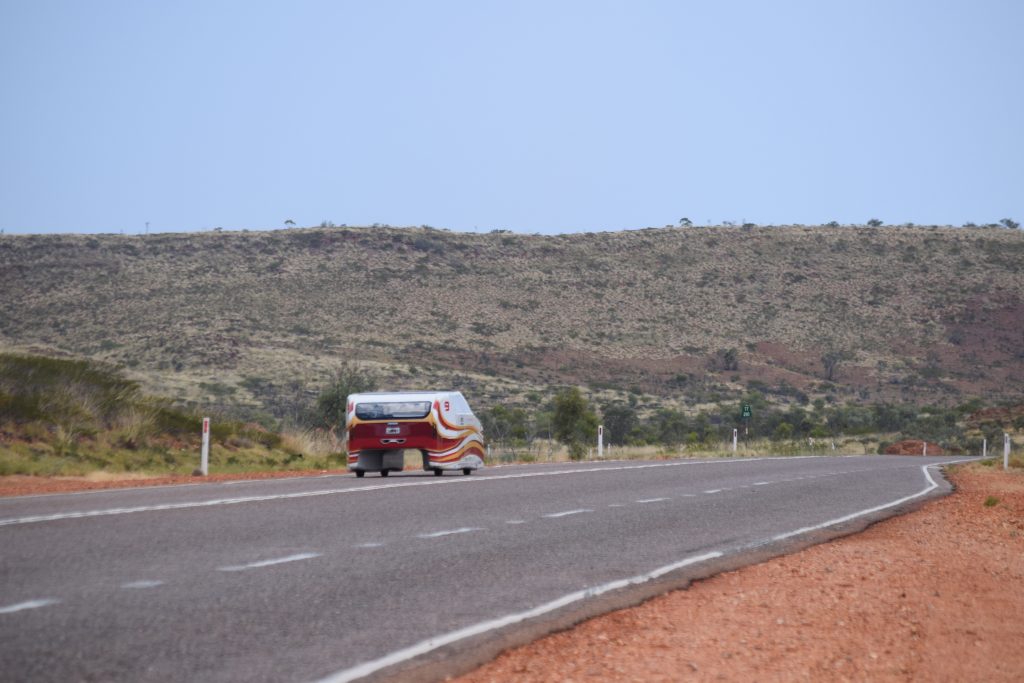NORTHERN TERRITORY, AUSTRALIA – Day three of the Bridgestone World Solar Challenge started with plenty of sun for PrISUm Solar Car but ended with heavy rain.
The team logged roughly 378 kilometers beginning the day just south of Elliott and finishing north of Barrow Creek. Skies were blue and mostly clear in the morning while temperatures were in the 90s when the team hit their first controlled stop in Tennant Creek around lunchtime.
“The car performed as expected during this part of the day. We reached the stop with exactly what we expected to have,” said Lucas Ince, PrISUm’s Strategy Manager. “The team worked quickly, efficiently, and safely the whole day. I could not be more proud of this team and how they worked together today. We have a great group here.”
Around 2:30 local time the team encountered heavy rain which quickly turned the red dirt into muddy pools of water along the side of the road. This marked the first time during the race that the car – Penumbra – experienced significant rain. The rain inhibited the Penumbra’s ability to absorb solar energy at a point in the race when the battery was already stressed, forcing them to pull over to evaluate the problem.
“The rain, specifically the cloud cover, was hard on the car. It’s hard to run a Solar race without the sun,” said Ince, a senior in computer engineering. “The team reacted well to the rain and we protected the car from damage and while also keeping us all safe. I wish we would have been able to make it today but the rain was farther north than we expected.”
After a brief recharge, in the middle of the pouring rain, the team hit the road again and progressed toward the controlled stop in Barrow Creek. Unfortunately, the lack of charge to the battery pack forced the team to pull over again and use the trailer to haul the car the remaining few kilometers to the next controlled stop. From there the team was forced to trailer to its rest stop for the night, about 75 kilometers north of Alice Springs. Because the team was forced to trailer the car they’ve been moved from cruiser class to adventure class.
“It is a disappointment to our team that we were unable to complete the challenge as a cruiser class team. There’s no denying that. There are things to be learned from this challenge on every level. But, in the end, we still are a cruiser class vehicle no matter what happens,” said Dylan Neal, PrISUm’s Project Director. “We were just shy of completing half of the race. We still have another 1500 kilometers to go and we are in the middle of the Outback with the sun shining and the winds at our back. While we have that, our team will never give up fighting for a dream.”
Despite the setback, Neal said the team’s spirits remain high and that they’ll continue to achieve what they set out to do.
“By the values of this team, of those in the United States and in Australia, we set out to build a practical solar car that changes the paradigm of transportation. In doing so, we also strive to inspire future generations to pursue their passions through education. Here in Australia, we look to make that statement through completing this challenge. In Adelaide, we look to let anyone and everyone experience our vehicle, have a seat, and take a ride. We want to prove that our solar utility vehicle is a solar car that can perform and look like a real car,” said the senior mechanical engineering major. “Our race is by no means over. Tomorrow we hit the road like any other day, nothing has changed. The race is over only when we give up. We pushed the boundaries of design and technology. Only when you go where no one has dared go before, can a difference be made.”
The Bridgestone World Solar Challenge is a 3021-kilometer biennial race that began in Darwin in Australia’s Northern Territory on October 8 and finishes in Adelaide in Southern Australia on the 15th. 2017 marks the race’s 30th year and features 42 teams from more than a dozen countries.



